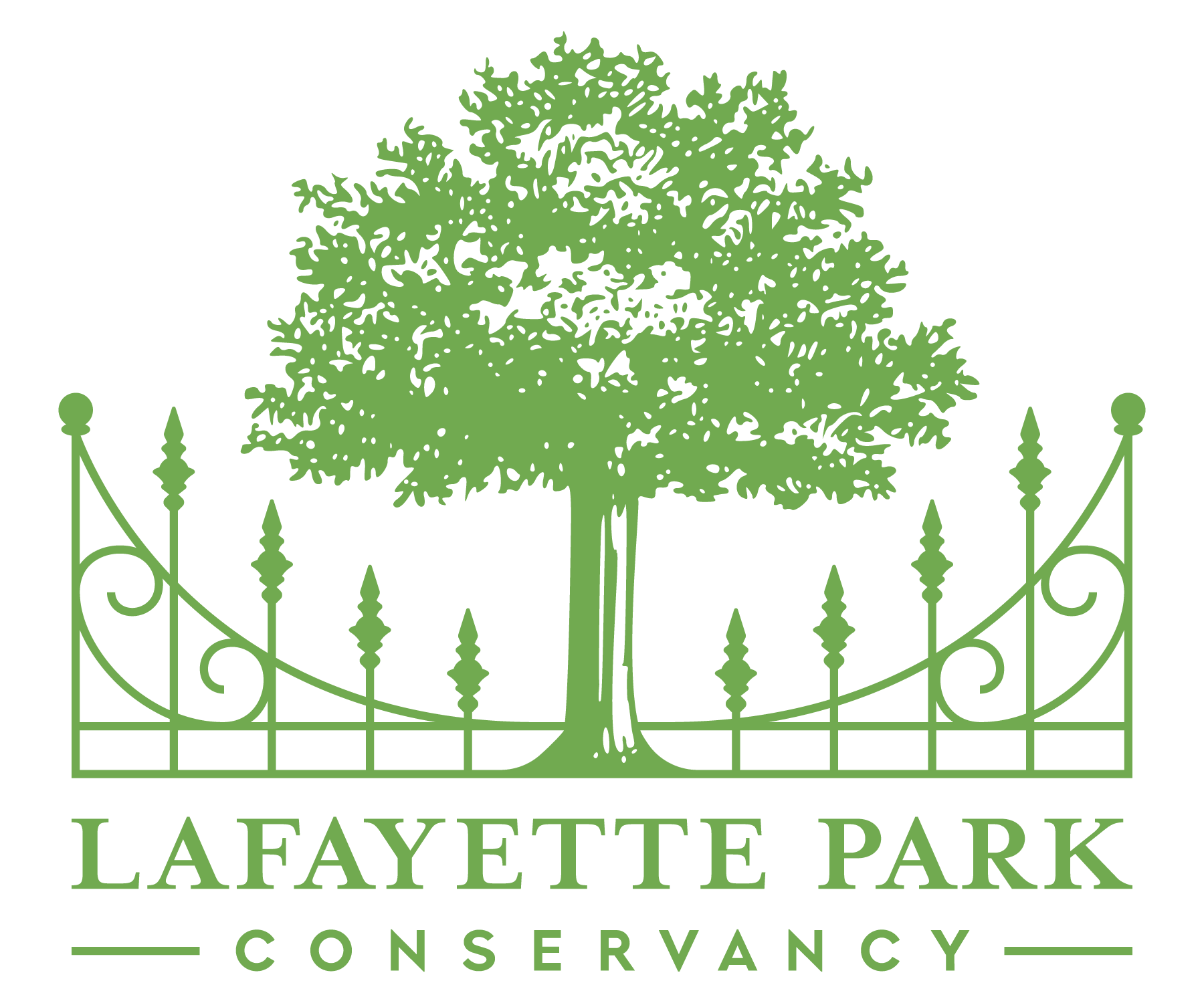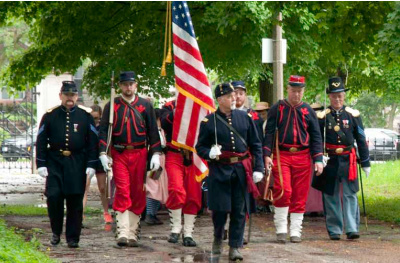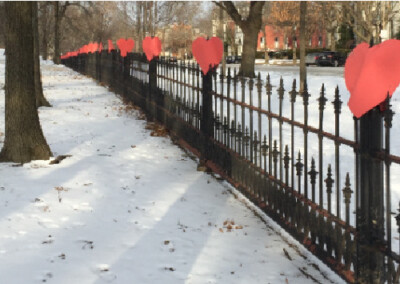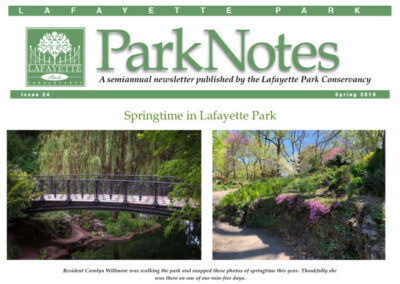History
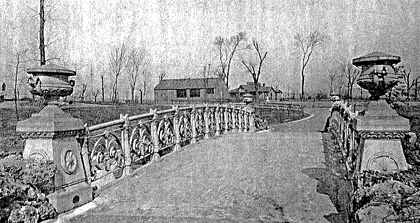
Then and Now
Following a long transformation from grazing commons to popular Victorian urban oasis, Lafayette Park was leveled in May 1896 by a freak tornado. It was restored quickly, and sufficiently enough to win a best landscaping award at the 1904 Worlds Fair. The park was nearly forgotten as the neighborhood declined, until an urban rebirth in the 1970s brought the area back to its former historical splendor. Lafayette Park now serves as the heart of a vibrant and progressive neighborhood, playing host to many of its functions and welcoming all guests.
The History Of Lafayette Park

Lafayette Park was established from common grounds first set aside by the City of St. Louis in 1767. As the St. Louis Common, city residents could gather firewood, hunt game and graze their livestock. In 1835, when the city sold off the Common lands for expansion, it set aside a 30-acre tract of land for a park. This made it the first such preserve within the area of the Louisiana Purchase. The city showed foresight in creating a Board of Improvement to develop the park and raise funds for it. As a result, this wild, scrubby, unfenced area was gradually transformed into a sophisticated urban greenspace.
Development of the park began in 1851, when the city of St. Louis dedicated the park as Lafayette Square (renamed Lafayette Park in 1854.). As the city didn’t allocate funds for park development, surrounding property owners contributed over $8,000 for a wooden fence to enclose the grounds and keep grazing animals out. Many shade trees were planted, and the park’s first paths laid out. In 1858 a city ordinance set aside eight acres of the park for a military parade ground (now the Multi-Use Recreation Field). It was marked by a giant flag pole, as seen in this drawing by James Palmatary from 1858:
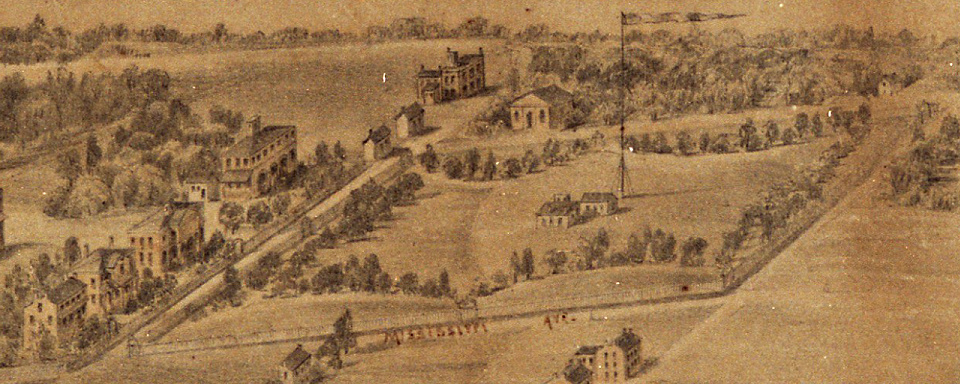
Lafayette Park was home to one of the first organized base ball leagues in America. At the onset of Civil War, however, the young players chose their sides, and went off to war. Some close relationships were irreparably broken within the community. Vintage base ball is still played here, with two teams claiming the park as home field.
Substantial improvements were made to the park in 1864 when municipal bonds raised $30,000. Professional landscape artist Maximillian Kern was hired as park superintendent. Over the next few years he guided development of the park’s most striking landscapes and plantings. The resulting flowered grottoes, gardens, fountains, pavilions, paths and trees made for an exceptionally popular strolling park. Kern later designed much of St. Louis’s Forest Park layout.
In 1868, another municipal bond issue passed, financing the iron fence and gateways that still enclose the park. That year a bronze statue of Thomas Hart Benton was dedicated before a reported crowd of 30,000-40,000 people. The Benton statue, created by Harriet Hosmer, was the first public monument west of the Mississippi River and one of the first public works by any female sculptor. 1869 saw the installation of another monument, a bronze statue of George Washington cast from Jean Houdon’s marble original.
The late 19th century was Lafayette Park’s heyday. Large crowds routinely gathered for concerts, speeches and an escape from urban smoke and noise. Victorian visitors strolled, picnicked, cruised the main lake in swan boats, and enjoyed concerts at the music stand. A typical weekend witnessed crowds in the thousands and the Park House was established as a police station to maintain order
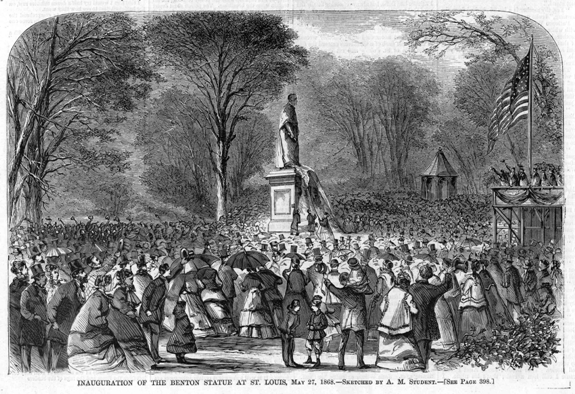
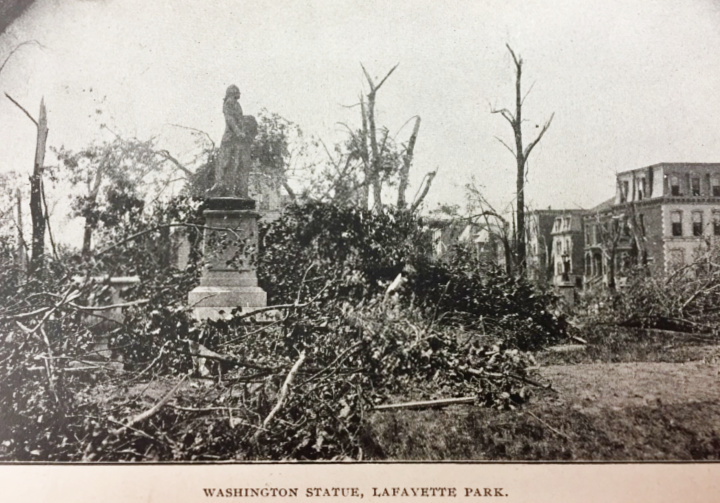
In 1896, a devastating tornado ripped through St. Louis and the Lafayette Square neighborhood. Dozens of homes were severely damaged and nearly all of the trees and structures in the park were destroyed. Rebuilding began immediately and many park attractions were repaired or replaced, but the park lost its former grandeur. Improved transportation and the rise of Forest Park caused many wealthy residents to move west rather than rebuild in Lafayette Square. Throughout the first half of the 20th century, various features were updated or converted to more modern uses. The west lake was transformed in 1916 to a lily pond and then in the 1940s to a wading pool. In 1943 the Park House became a groundskeeper’s residence.
After World War II, the neighborhood and park experienced a prolonged period of decline. The west pond (todays rock garden) was filled in during the 1950s, and eventually became today’s Rock Garden. The 1876 Music Stand was demolished in 1951, and by the late 1960s the Park House had fallen into disrepair and was boarded up.
The park’s renaissance began in the 1970s, when Lafayette Square residents and the City of St. Louis, in the spirit of the upcoming national bicentennial, focused on park restoration. The iron fence surrounding the park was repaired and partially restored. Residents renovated the Park House. In 1976, as part of the bicentennial celebration, the park received a gift from the people of France. Like the Washington statue, this was a sculpture by Jean Houdon, a bust of the Marquis de Lafayette. It is currently displayed in the Park House.
The year 2001 marked both the 150th anniversary of Lafayette Park’s dedication and the beginning of current effort to restore the park to its original grandeur. The Lafayette Park Conservancy (LPC) was formed to raise funds and plan improvements. In 2003-2004, Lafayette Square residents, the City of St. Louis. the LPC and other interested parties joined together to create a Master Plan that guides park restoration and development. Click on the button below for more details.
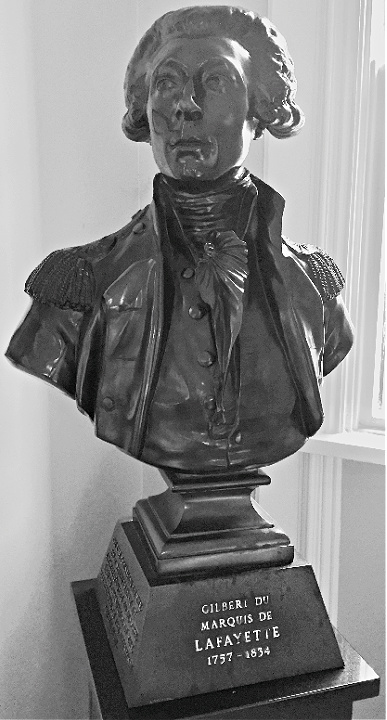
Upcoming Events
April 2025
Park News
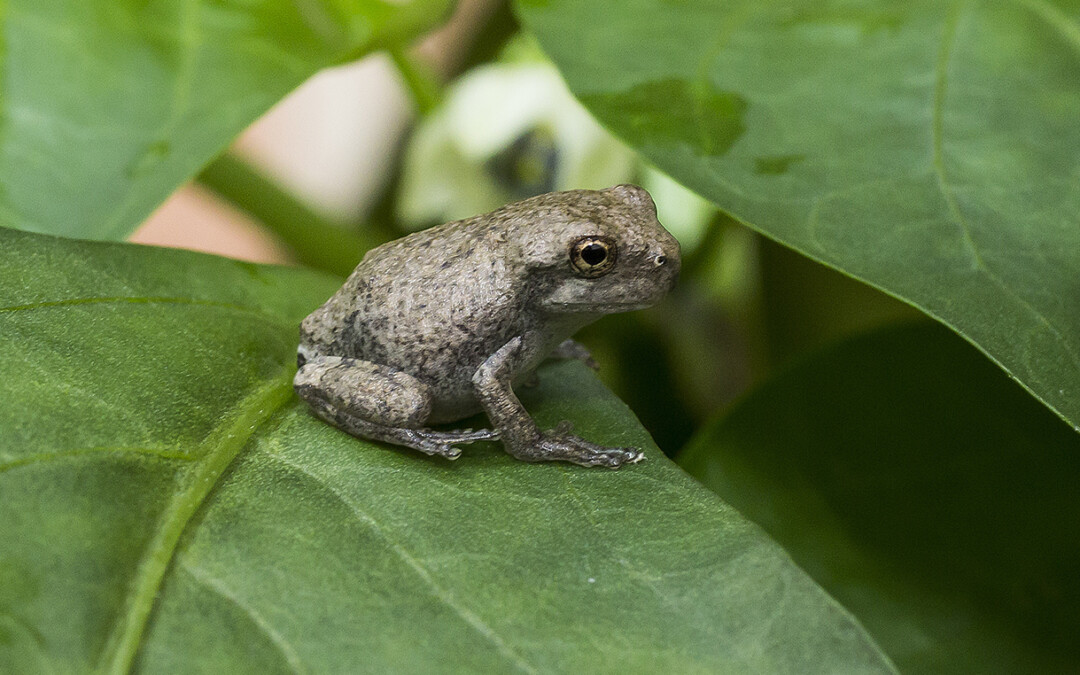
VERT-de-GRIS
As you might imagine, I was caught completely off-guard when, strolling through the shire one evening, a dashing young prince in the guise of a Blanchard’s cricket frog (Acris blanchardi) bounced out of the shadows and onto the path before me, demanding a kiss.
